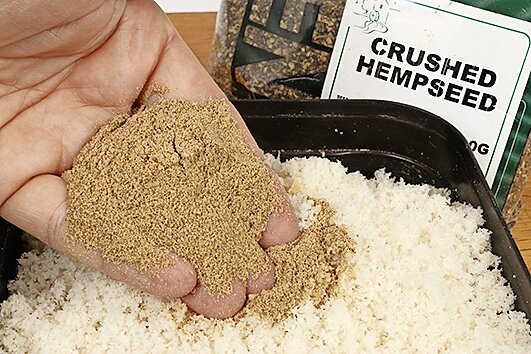"It has to be bread for river roach" with Dr Paul Garner
Roach are staging a substantial comeback. Whether from the tremendous work of the Avon Roach Project, or natural recruitment on other rivers, big roach are out there for those willing to look for them.
Very often the first clues are fish caught by accident, often by chub or barbel anglers, using heavy gear. Be quick to follow up on these leads and you might just strike the silver fish mother lode.
WORLDS APART
Quite why river roach should be willing to feed on a much wider range of baits than their stillwater cousins, especially in the winter, can only be guessed at. I think it is probably because in stillwaters small invertebrates make up virtually all of the fish’s diet. This means that they become fixated on small baits, such as maggots.
In rivers, big roach will have a wider natural diet, and so are not as choosy. Heavily-fished carp lakes are almost a halfway house, with large volumes of boilies, sweetcorn and pellets going in to supplement the roach diet. Yet, even here, the number of big roach caught on these baits can be minuscule, especially in winter.
PUNCH IT
I grew up among an older generation of dyed-in-the-wool roach anglers whose tactics are just as good today as they were back then. Bread was their bait of choice, normally fished under a big balsa float to hold the line when trotting downstream. Today we might prefer to quivertip with a small feeder, but the bait choice remains the same
A decent-sized piece of bread can be a very selective bait, picking out the bigger fish.
A punch of around 8mm is perfect for producing big-roach hookbaits, although you must get the texture right to keep the bread on the hook. Look for a thick-sliced white loaf with a dense structure. Cheaper loaves tend to be full of air pockets that lead to their falling to bits.
To toughen up your slices of bread, compress them overnight. I use an offcut of kitchen worktop heavy enough to halve the thickness of the slices overnight.
Place a damp cloth between the bread and the weight to stop it sticking and to add a little moisture. Store the slices of bread in an airtight bag to stop them drying out.
TRY A CAGE
A small cage feeder is an easy way of feeding bread. A dry mix will hold in the feeder, but break down quickly. Drop your feeder into a bait tub of water to see how long it takes to break down.
CLOUDY FEED
Whether I am floatfishing or feeder fishing, my feed is based on punch crumb. This very fine white crumb is much less sticky than normal white breadcrumb and has an almost gritty texture. Mixed dry it will form an excellent cloud in the water column, but add a tiny bit more water and it will hold together and sink quickly.
Alternatively, remove the crusts from a few slices and put the white flake through a food liquidiser until it has been ground to a fine consistency.
This liquidised bread holds together perfectly in a cage feeder, and can be added to punch crumb when floatfishing to help get it down.
Roach don’t have big appetites, so avoid adding any larger pieces of bread to the feed. Two ingredients that are worth adding are a pinch of crushed hemp and the same of crushed pellets. Using pellets for river roach may seem odd, but roach do like the taste of pellets, even in rivers where they aren’t used a great deal.
MY CAGE FEEDER MIX
A combination of liquidised flake and punch crumb makes the ideal feed for a cage feeder.
Here is how I make mine...









